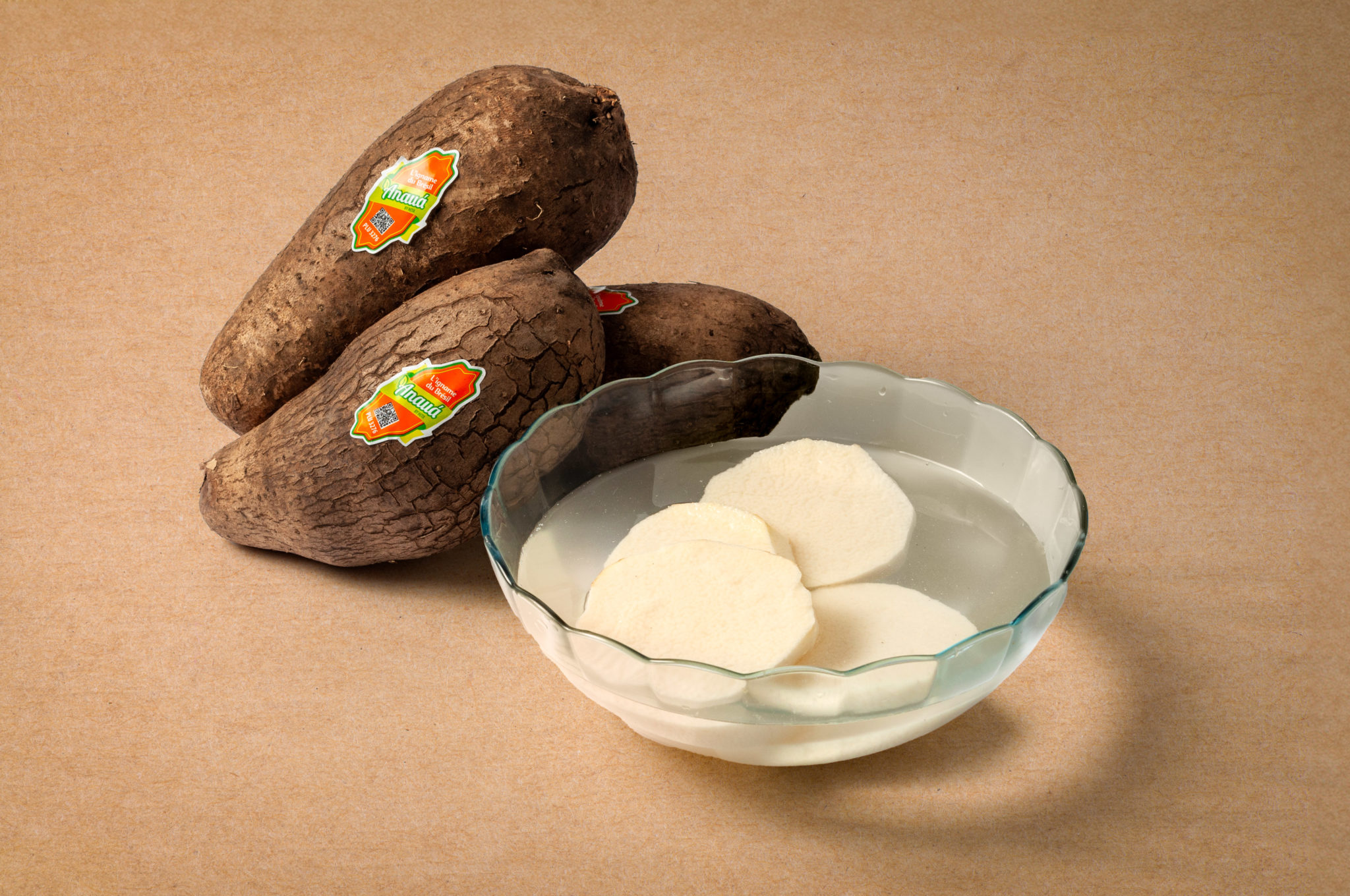Yam
Product Caracteristics
Cultivated in the tropical and subtropical regions, yams are part of the basic diet of many countries.The delicate taste and high nutritional value have popularized yam, and it is now widely consumed in the world, either in its natural form or as part of various recipes.
The ANAUÁ yam is of the cuscus type, grown on farms in Northeast Brazil. Because it is fully adapted to the climate of the region, it requires low use of pesticides, generating little environmental impact.
Origin
The English word “yam” comes from the African words njam, nyami or djambi, which means “toeat”. African slaves in America began to call the sweet potatoe, native to USA, of yam – since it resembled the food they knew in Africa.
Currently, the term yam is used generically for tropical tubers, representing many plants, of various botanical genus grown in tropical and equatorial zones.
ANAUÁ, yam from Brazil, belongs to the genus Dioscorea, of the alata species. Although often mistaken for sweet potatoes, it is a totally different tubercle in appearance, features, benefits, texture and flavor.

